Kaffee hag
Welcome to GermanybyMail - the worldwide mailorder service for the famous Kneipp wellness products, Gala gourmet coffee, Jacobs superior coffee, Dr. Oetker backery products and other delicacies from Germany.
For all your special requests contact us directly. GermanybyMail will do the shopping. Within 72 hours you'll receive a response through email.
GermanybyMail will be happy to serve you. We invite you to experience our excellent service. A taste of Germany is only a click away !
Kaffee Hag albums
Kaffee Hag : Deutsche Ortswappen
- Issued by : Kaffee Hag, Bremen, Germany
- Date of issue : 1913-1939
- Number of stamps/cards : >3500 in two series
- Image variants : Over 150 variations in image, text or both
- Author : Otto Hupp
Company
For information on the company, see the overview of Coffee Hag albums.
The history of the German issues of the Kaffee Hag albums is complicated, due to two wars and the changes in the political situation in Germany.
Between 1913 and 1939 two series of albums have been issued.
The first series was started in 1913 and not finished due the First World War. In 1927 a second series was started, which was also not finished, due to the Second World War.
Although both series supposedly would contain around 3000 stamps, only 703 and around 2820 were actually published (not counting the numerous reprints and variations).
Old series 1913-1918
The first series was issued between 1913 and 1916 as Die Deutsche Ortswappen, but this name does not appear on the albums itself. The albums were issued as albums, not as loose pages as in the second series. Each album dealt with one or more Prussian provinces or other States. The albums were reprinted several times, there were 6 albums and 12 different editions:
The following albums were printed:
Issued 1913, reprinted and revised in 1913, 1914 and 1916, and printed in 10, 18, 11 and 4 thousand copies respectively.
Contains numbers 1-69 with coats of arms of Ostpreussen (now mainly Poland and Russia).
The first edition contains three additional texts; one preface by the Brücke association, one about the Brücke and Kaffee Hag and one with 5 press references to the arms. The Brücke was an organisation that, among other things, promoted the use of advertising and the owner of the Kaffee Hag Company (Roselius) was one of the first to issue stamps in the uniform size system promoted by Die Brücke.
The second edition only contains a text about advertising as a means to spread culture as well as 4 press references.
The third and fourth editions contain three texts by Prof. Hupp on heraldry, general remarks and the history of the arms of Ostpreussen. The sequence of the images in these last editions has also changed; in the first two editions the towns in Regierungsbezirk (district) Allenstein were placed among the two other districts, in the third edition the district was placed after the other two districts.
Issued 1913, reprinted 1915, with 10.000 copies in each edition
Contains numbers 70-126 and 282 after number 82.
The first edition has three texts; one on the stamps of Kaffee Hag, and two about different aspects of coffee.
The second edition has the additional stamp and two texts from Prof. Hupp, on the sources of the arms and on the history of the arms of Westpreussen.
Issued 1914 and reprinted in 1915, with 20 and 5 thousand copies each
Contains numbers 127-281, the second issue also the additional numbers 477-479. Number 477 is placed between 158-159, 478 between 160-161, and 479 between 136-137. Number 281 is placed at the end of the series in the first edition, and between 164-165 in the second edition. Due to these additions, the sequence of the arms per page changed considerably. The second edition also has additional geographical information on the first page of the arms.
Both issues contain two texts on the history of the arms.
4: Ober- und Niederbayern
Issued in 1914 and reprinted in 1916 in 20.000 and 4.000 copies
Contains numbers 320-476
Both issues are identical and contain 3 texts frorm Prof. Hupp on the history of the arms.
Issued in 1915 in 20.000 copies
Contains numbers 283-319 and 480-518
Also contains two additional texts, one on the heraldic language, and the other on the history of the arms. Although there is officially only one edition, there are differences in the back page, indicating at least two different prints of this edition.
Issued in 1915 in 20.000 copies
Contains numbers 519-663
Has one additional text on the history of the arms.
Album number 7, Schlesien, was planned, but never issued. Planned were 188 stamps, of which only 40 (664-703) have been published.
According to the texts on the back of the stamps a total of 3000 arms were planned.
It is not known how many stamps were actually issued, but a number of 68 million has been mentioned.
The stamps are marked with the initials of the author, OH, for Prof. Otto Hupp. The initials are printed in black, with the exception of numbers 192-223 that show either initials in blue, or no initials at all.
On the backside of the stamps the name and description of the arms, as well as the number of inhabitants was given. The latter was taken from the census of 1910. All stamps also have a small advertising for Kaffee Hag. In many cases, when the description of the arms was short, additional (advertising) texts were published.
There are 6 variations of the arms known (Liebenwalde, Strasburg, Hengersberg, Wollin, Jaratschewo, Jarotschin), as well as several small changes on the decorations, the letters and the texts on the back.
All books were published by B. Heller in München.
The books were not for sale in the bookshops, but had to be ordered at Kaffee Hag in Bremen in exchange for a number of stamps. Stamps were packed in the pre-packed coffee sold all over the country.
The stamps were issued in sheets of 32 (8x4) stamps, see image below.
New Series (1927/8-1939)
The new (second) series was published as Deutsche Ortswappen (Neue Reihe) between 1927 and 1938. There are several differences as compared with the old series issued between 1913-1918.
The albums were issued as loose sheets, which could be bound in either 10 small albums, or in four large albums. Each page contained 9 arms. The content of the 10 albums was described, still people often filled the albums at random or by State, which means that each album may contain different pages.
The four large albums were not numbered and could be used at will.
The arms were published by province/State, but the images of the different provinces were not issued at the same time, some parts were issued years after the first half of the series.
Like in the old series the back of the arms contained the description and some advertising. The stamps were issued in sheets of 18.
There are many variations in the new series known. As the images and the sheets often needed to be reprinted, small corrections were made and mistakes were corrected. There are at least 75 different images known, which are not listed in the Additions and Corrections section. Besides this, there are hundreds of texts variations known (both in albums and on the stamps), such as changes in the number of inhabitants, changed descriptions of the arms, changed status (town, city, village) and many more.
An example of a variation is Neumünster
The arms of the following States and provinces were issued :
- Anhalt (free-state) : 22 arms with space for additions.
- Baden (free-state) : 135 arms
- Bayern :
- District Mittelfranken : 84 arms
- District Niederbayern : 78 arms
- District Oberbayern : 81 arms
- District Oberfranken : 89 arms
- District Oberpfalz : 93 arms
- District Rheinpfalz : 54 arms
- District Schwaben : 76 arms
- District Unterfranken : 72 arms
- Braunschweig (free-state) : 16 arms
- Bremen : 3 arms, published on the pages after Hannover – Stade and numbers 1-3 in that series; same 3 arms, published as numbers 1-3 in the Hanse pages
- Hamburg : 4 arms, published and numbered after Lippe/Schaumburg-Lippe; 4 arms (1 different) published as numbers 4-8 in the Hanse pages
- Hessen :
- District Oberhessen : 36 arms (plus one addition, published after Rheinhessen)
- District Rheinhessen : 21 arms (plus one addition)
- District Starkenburg : 43 arms (plus one addition, published after Rheinhessen)
- Lippe : 11 arms, published as part of Lippe/Schaumburg-Lippe
- Lübeck : 2 arms, published and numbered after Braunschweig; The same 2 arms published as numbers 8 and 9 in the Hanse pages
- Mecklenburg-Schwerin : 44 arms
- Mecklenburg-Strelitz : 9 arms
- Oldenburg : 18 arms
- Preussen (kingdom)
- Berlin : 36 arms
- Province Brandenburg
- district Frankfurt an der Oder : 68 arms
- district Potsdam : 79 arms
- Province Grenzmark Posen-Westpreussen : 26 arms
- Province Hannover
- district Aurich : 8 arms
- district Hannover : 36 arms
- district Hildesheim : 36 arms
- district Lüneburg : 24 arms
- district Osnabrück : 16 arms
- district Stade : 15 arms
- Province Hessen-Nassau
- district Kassel (partly published as Cassel) : 78 arms
- district Wiesbaden : 53 arms
- Province Hohenzollernsche Lande (also published as Rheinprovinz, district Sigmaringen) : 9 arms
- Province Niederschlesien
- district Breslau : 60 arms (also partly published as Province Schlesien)
- district Liegnitz : 63 arms (plus one addition after Obeschlesien-Oppeln)
- Province Oberschlesien
- district Oppeln : 44 arms (of which one as addition)
- Province Ostpreussen
- Province Pommern
- Province Rheinprovinz
- district Aachen : 18 arms
- district Düsseldorf : 72 arms
- district Koblenz : 44 arms (of which one as addition)
- district Köln : 18 arms
- district Trier : 24 arms (of which one as addition)
- Province Sachsen
- district Erfurt : 30 arms
- district Magdeburg : 54 arms
- district Merseburg : 77 (plus one published as correction at the end)
- Province Schleswig-Holstein : 51 arms (of which four as additions)
- Province Westfalen
- district Arnsberg : 64 arms (of which one as addition after Westfalen – Münster)
- district Minden : 44 arms
- district Münster : 43 arms (of which one as addition)
- Saargebiet : 9 arms
- Sachsen (free-state)
- district Bautzen : 18 arms
- district Chemnitz : 31 arms
- district Dresden : 36 arms (published as Kreishauptmannschaft Dresden and Kreis Dresden)
- district Leipzig : 36 arms
- district Zwickau : 31 arms (of which two as additions)
- Schaumburg-Lippe : 3 arms, published as part of Lippe/Schaumburg-Lippe
- Thüringen : 101 arms
- Württemberg
- district Donaukreis : 36 arms
- district Jagtkreis : 35 arms (of which 3 as additions)
- district Neckarkreis : 40 arms
- district Schwarzwaldkreis : 39 (of which 3 additions after the Neckarkreis)
- Additions and Corrections : 44 arms, numbered in sequence of their province/district
Images issued
For an overview of all images (over 5000) issued see here.
Help maintaining Heraldry of the World !
Heraldry of the World is a private site, which is on-line since 1996. It is a hobby, which takes much time and money (books, hosting etc etc). If you would like to support this site, donations are very welcome ! You can support the site by donating items (books, pdf, images and other items) or financially using the PayPal button below.
All donations send to this specific PayPal address will be used for acquiring books or other items for the site and not for private use.
Navigation menu
Personal tools
Categories
Heraldic collector's items
What is new ?
About the site
Google AdSense
- This page was last modified on 24 June 2017, at 05:52.
- This page has been accessed 22,679 times.
- . © since 1996, Heraldry of the World, Ralf Hartemink
(Herbarz Świata, विश्व की हेरलड्री, Huy hiệu của thế giới, أعلام النبلاء من العالم, বিশ্ব এর ঘোষকতা, Хералдиката на света, 世界的纹章, Heraldik af verden, Heraldik der Welt, Héraldique du monde, Εραλδική του κόσμου, Skjaldarmerki heimsins, Araldica del mondo, 世界の紋章, 세상의 문장, Heraldika pasaulē, Pasaulio heraldika, Heraldikk av verden, ایین و تشریفات نشانهای از جهان, Heráldica do mundo, Геральдика мира, Heraldika sveta, Heráldica del mundo, ప్రపంచ యొక్క వంశావళి,ตราประจำตระกูลของโลก, Dünyanın merheri, Heraldik av världen)
Coffee Hag albums
Coffee Hag albums
Introduction
In the early 20th century the Kaffee Handelsgesellschaft AG (Kaffee HAG) in Bremen, Germany, started with the publication of heraldic stamps and collector's albums.
The stamps and books were published as a result of the initiative of the Brücke association. This was an initiative of Emperor Wilhelm II to make an archive of published material. At the same time the association developed standard sizes for publishing material. To promote their activities and their new standards, they encouraged companies to publish material in their standards. The Kaffee Hag company was one of the companies that agreed to do so. Hence the stamps are published in the so-called Weltformat V der Brücke (or 4 x 5,66 cm), which is also printed on the back of the stamps. The albums were published in the Weltformat IX (16 x 22.6 cm). The association went bankrupt in 1913 and abolished in 1914, but the size of the stamps remained the same for all the albums.
Only on the German and Swiss stamps there was the reference to the Weltformat.
The company hired the famous artist Otto Hupp to design the stamps. Otto Hupp already published several well known volumes on German civic heraldry since the 1890s.
The albums became a success in Germany and the company exported the idea to the other European countries in which the company operated.
Two series, Germany and Switzerland, were started before World War I and were never finished. In the 1920s and 1930s the second series of these countries as well as the other countries were launched. In each country different heraldic artists were used to write the albums and draw the images.
In total around 125 different albums were published between 1914-1955. Albums for the Baltic states, Italy as well as a second album for Poland and an 11th for Germany were planned, but never issued. The French series stopped after 6 albums of the planned 40.
Albums issued
Below a list and some characteristics of the albums.
Kaffee Hag albums
Kaffee Hag : Deutsche Ortswappen
- Issued by : Kaffee Hag, Bremen, Germany
- Date of issue : 1913-1939
- Number of stamps/cards : >3500 in two series
- Image variants : Over 150 variations in image, text or both
- Author : Otto Hupp
Company
For information on the company, see the overview of Coffee Hag albums.
The history of the German issues of the Kaffee Hag albums is complicated, due to two wars and the changes in the political situation in Germany.
Between 1913 and 1939 two series of albums have been issued.
The first series was started in 1913 and not finished due the First World War. In 1927 a second series was started, which was also not finished, due to the Second World War.
Although both series supposedly would contain around 3000 stamps, only 703 and around 2820 were actually published (not counting the numerous reprints and variations).
Old series 1913-1918
The first series was issued between 1913 and 1916 as Die Deutsche Ortswappen, but this name does not appear on the albums itself. The albums were issued as albums, not as loose pages as in the second series. Each album dealt with one or more Prussian provinces or other States. The albums were reprinted several times, there were 6 albums and 12 different editions:
The following albums were printed:
Issued 1913, reprinted and revised in 1913, 1914 and 1916, and printed in 10, 18, 11 and 4 thousand copies respectively.
Contains numbers 1-69 with coats of arms of Ostpreussen (now mainly Poland and Russia).
The first edition contains three additional texts; one preface by the Brücke association, one about the Brücke and Kaffee Hag and one with 5 press references to the arms. The Brücke was an organisation that, among other things, promoted the use of advertising and the owner of the Kaffee Hag Company (Roselius) was one of the first to issue stamps in the uniform size system promoted by Die Brücke.
The second edition only contains a text about advertising as a means to spread culture as well as 4 press references.
The third and fourth editions contain three texts by Prof. Hupp on heraldry, general remarks and the history of the arms of Ostpreussen. The sequence of the images in these last editions has also changed; in the first two editions the towns in Regierungsbezirk (district) Allenstein were placed among the two other districts, in the third edition the district was placed after the other two districts.
Issued 1913, reprinted 1915, with 10.000 copies in each edition
Contains numbers 70-126 and 282 after number 82.
The first edition has three texts; one on the stamps of Kaffee Hag, and two about different aspects of coffee.
The second edition has the additional stamp and two texts from Prof. Hupp, on the sources of the arms and on the history of the arms of Westpreussen.
Issued 1914 and reprinted in 1915, with 20 and 5 thousand copies each
Contains numbers 127-281, the second issue also the additional numbers 477-479. Number 477 is placed between 158-159, 478 between 160-161, and 479 between 136-137. Number 281 is placed at the end of the series in the first edition, and between 164-165 in the second edition. Due to these additions, the sequence of the arms per page changed considerably. The second edition also has additional geographical information on the first page of the arms.
Both issues contain two texts on the history of the arms.
4: Ober- und Niederbayern
Issued in 1914 and reprinted in 1916 in 20.000 and 4.000 copies
Contains numbers 320-476
Both issues are identical and contain 3 texts frorm Prof. Hupp on the history of the arms.
Issued in 1915 in 20.000 copies
Contains numbers 283-319 and 480-518
Also contains two additional texts, one on the heraldic language, and the other on the history of the arms. Although there is officially only one edition, there are differences in the back page, indicating at least two different prints of this edition.
Issued in 1915 in 20.000 copies
Contains numbers 519-663
Has one additional text on the history of the arms.
Album number 7, Schlesien, was planned, but never issued. Planned were 188 stamps, of which only 40 (664-703) have been published.
According to the texts on the back of the stamps a total of 3000 arms were planned.
It is not known how many stamps were actually issued, but a number of 68 million has been mentioned.
The stamps are marked with the initials of the author, OH, for Prof. Otto Hupp. The initials are printed in black, with the exception of numbers 192-223 that show either initials in blue, or no initials at all.
On the backside of the stamps the name and description of the arms, as well as the number of inhabitants was given. The latter was taken from the census of 1910. All stamps also have a small advertising for Kaffee Hag. In many cases, when the description of the arms was short, additional (advertising) texts were published.
There are 6 variations of the arms known (Liebenwalde, Strasburg, Hengersberg, Wollin, Jaratschewo, Jarotschin), as well as several small changes on the decorations, the letters and the texts on the back.
All books were published by B. Heller in München.
The books were not for sale in the bookshops, but had to be ordered at Kaffee Hag in Bremen in exchange for a number of stamps. Stamps were packed in the pre-packed coffee sold all over the country.
The stamps were issued in sheets of 32 (8x4) stamps, see image below.
New Series (1927/8-1939)
The new (second) series was published as Deutsche Ortswappen (Neue Reihe) between 1927 and 1938. There are several differences as compared with the old series issued between 1913-1918.
The albums were issued as loose sheets, which could be bound in either 10 small albums, or in four large albums. Each page contained 9 arms. The content of the 10 albums was described, still people often filled the albums at random or by State, which means that each album may contain different pages.
The four large albums were not numbered and could be used at will.
The arms were published by province/State, but the images of the different provinces were not issued at the same time, some parts were issued years after the first half of the series.
Like in the old series the back of the arms contained the description and some advertising. The stamps were issued in sheets of 18.
There are many variations in the new series known. As the images and the sheets often needed to be reprinted, small corrections were made and mistakes were corrected. There are at least 75 different images known, which are not listed in the Additions and Corrections section. Besides this, there are hundreds of texts variations known (both in albums and on the stamps), such as changes in the number of inhabitants, changed descriptions of the arms, changed status (town, city, village) and many more.
An example of a variation is Neumünster
The arms of the following States and provinces were issued :
- Anhalt (free-state) : 22 arms with space for additions.
- Baden (free-state) : 135 arms
- Bayern :
- District Mittelfranken : 84 arms
- District Niederbayern : 78 arms
- District Oberbayern : 81 arms
- District Oberfranken : 89 arms
- District Oberpfalz : 93 arms
- District Rheinpfalz : 54 arms
- District Schwaben : 76 arms
- District Unterfranken : 72 arms
- Braunschweig (free-state) : 16 arms
- Bremen : 3 arms, published on the pages after Hannover – Stade and numbers 1-3 in that series; same 3 arms, published as numbers 1-3 in the Hanse pages
- Hamburg : 4 arms, published and numbered after Lippe/Schaumburg-Lippe; 4 arms (1 different) published as numbers 4-8 in the Hanse pages
- Hessen :
- District Oberhessen : 36 arms (plus one addition, published after Rheinhessen)
- District Rheinhessen : 21 arms (plus one addition)
- District Starkenburg : 43 arms (plus one addition, published after Rheinhessen)
- Lippe : 11 arms, published as part of Lippe/Schaumburg-Lippe
- Lübeck : 2 arms, published and numbered after Braunschweig; The same 2 arms published as numbers 8 and 9 in the Hanse pages
- Mecklenburg-Schwerin : 44 arms
- Mecklenburg-Strelitz : 9 arms
- Oldenburg : 18 arms
- Preussen (kingdom)
- Berlin : 36 arms
- Province Brandenburg
- district Frankfurt an der Oder : 68 arms
- district Potsdam : 79 arms
- Province Grenzmark Posen-Westpreussen : 26 arms
- Province Hannover
- district Aurich : 8 arms
- district Hannover : 36 arms
- district Hildesheim : 36 arms
- district Lüneburg : 24 arms
- district Osnabrück : 16 arms
- district Stade : 15 arms
- Province Hessen-Nassau
- district Kassel (partly published as Cassel) : 78 arms
- district Wiesbaden : 53 arms
- Province Hohenzollernsche Lande (also published as Rheinprovinz, district Sigmaringen) : 9 arms
- Province Niederschlesien
- district Breslau : 60 arms (also partly published as Province Schlesien)
- district Liegnitz : 63 arms (plus one addition after Obeschlesien-Oppeln)
- Province Oberschlesien
- district Oppeln : 44 arms (of which one as addition)
- Province Ostpreussen
- Province Pommern
- Province Rheinprovinz
- district Aachen : 18 arms
- district Düsseldorf : 72 arms
- district Koblenz : 44 arms (of which one as addition)
- district Köln : 18 arms
- district Trier : 24 arms (of which one as addition)
- Province Sachsen
- district Erfurt : 30 arms
- district Magdeburg : 54 arms
- district Merseburg : 77 (plus one published as correction at the end)
- Province Schleswig-Holstein : 51 arms (of which four as additions)
- Province Westfalen
- district Arnsberg : 64 arms (of which one as addition after Westfalen – Münster)
- district Minden : 44 arms
- district Münster : 43 arms (of which one as addition)
- Saargebiet : 9 arms
- Sachsen (free-state)
- district Bautzen : 18 arms
- district Chemnitz : 31 arms
- district Dresden : 36 arms (published as Kreishauptmannschaft Dresden and Kreis Dresden)
- district Leipzig : 36 arms
- district Zwickau : 31 arms (of which two as additions)
- Schaumburg-Lippe : 3 arms, published as part of Lippe/Schaumburg-Lippe
- Thüringen : 101 arms
- Württemberg
- district Donaukreis : 36 arms
- district Jagtkreis : 35 arms (of which 3 as additions)
- district Neckarkreis : 40 arms
- district Schwarzwaldkreis : 39 (of which 3 additions after the Neckarkreis)
- Additions and Corrections : 44 arms, numbered in sequence of their province/district
Images issued
For an overview of all images (over 5000) issued see here.
Help maintaining Heraldry of the World !
Heraldry of the World is a private site, which is on-line since 1996. It is a hobby, which takes much time and money (books, hosting etc etc). If you would like to support this site, donations are very welcome ! You can support the site by donating items (books, pdf, images and other items) or financially using the PayPal button below.
All donations send to this specific PayPal address will be used for acquiring books or other items for the site and not for private use.
Navigation menu
Personal tools
Categories
Heraldic collector's items
What is new ?
About the site
Google AdSense
- This page was last modified on 24 June 2017, at 05:52.
- This page has been accessed 22,679 times.
- . © since 1996, Heraldry of the World, Ralf Hartemink
(Herbarz Świata, विश्व की हेरलड्री, Huy hiệu của thế giới, أعلام النبلاء من العالم, বিশ্ব এর ঘোষকতা, Хералдиката на света, 世界的纹章, Heraldik af verden, Heraldik der Welt, Héraldique du monde, Εραλδική του κόσμου, Skjaldarmerki heimsins, Araldica del mondo, 世界の紋章, 세상의 문장, Heraldika pasaulē, Pasaulio heraldika, Heraldikk av verden, ایین و تشریفات نشانهای از جهان, Heráldica do mundo, Геральдика мира, Heraldika sveta, Heráldica del mundo, ప్రపంచ యొక్క వంశావళి,ตราประจำตระกูลของโลก, Dünyanın merheri, Heraldik av världen)
Cafe Hag Decaffeinated Instant Coffee

Description
100% Pure Coffee.
Kosher Parve under the supervision of Safed Rabbinate.
Net Weight: 200g / 6.8 oz.
Nothing says "Israel" like classic powdered instant coffee - now naturally decaffeinated! Many an Israeli will turn his nose at the more expensive "Platinum" blends, and when they find themselves overseas, many yearn for the "taste of home" - classic powdered instant coffee!
Cafe Hag -- enjoy it day or night!
THE WORLD’S BIGGEST JUDAICA STORE
Home to thousands of fantastic Judaica products!
MONEY-BACK GUARANTEE
Satisfaction guaranteed – or your money back!
WORLDWIDE SHIPPING
From Israel with Love!





Get all the latest information on Events,
Sales and Offers. Sign up for newsletter today.
coffee hag
Результаты поиска
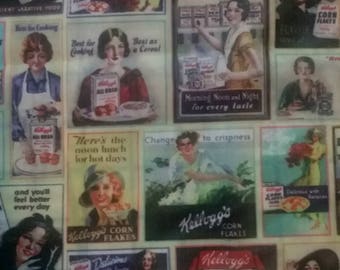
Vintage Kellogg Ad Fabric
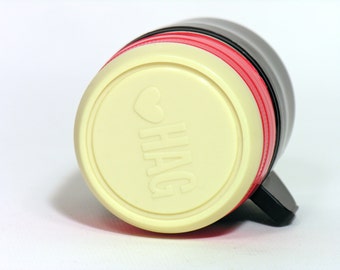
Glass and Plastic Thermos Mug - Hag Vacuum Mug - Made in USA - 1960 - Advertising Object - 1 Cup Coffee Thermos - Industrial Collectible
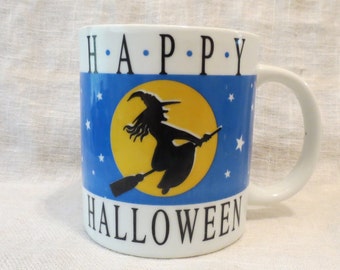
Happy Halloween Witch Mug
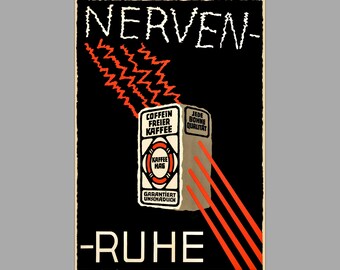
Nervous? 1932 Drink Kaffee Hag German Caffeine Free Drink Vintage Poster Print Retro Decor Free Us Post Low EU & CA Post Buy 3 Get 1 Free
11,25 US$ 12,50 US$ (10% off)
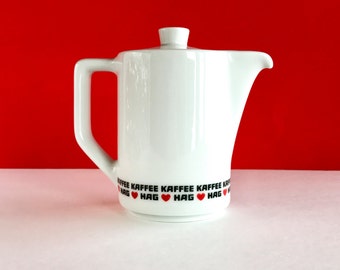
Mid Century Kaffee Hag Small Coffee Pitcher or Creamer, Vintage Schonwald Germany Kaffee Hag Promotional Coffee Pitcher
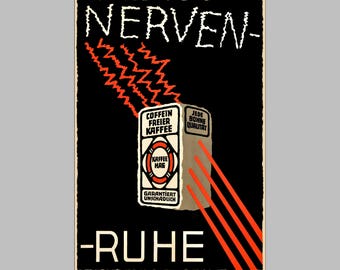
Coffein Freier Kaffe 1932 Caffe Hag Vintage Poster Print Retro German Coffee Advertising Art Free Us Post Low EU & CA Post Buy 3 Get 1 Free
11,25 US$ 12,50 US$ (10% off)

ON SALE -Merle Haggard "Hag"- Vinyl Decal, Yeti, Ozark, RTIC tumbler/cup, laptop, ipad, macbook, phone sticker, car window decal

Vintage Kellogg Ad Fabric

Glass and Plastic Thermos Mug - Hag Vacuum Mug - Made in USA - 1960 - Advertising Object - 1 Cup Coffee Thermos - Industrial Collectible

Happy Halloween Witch Mug

Nervous? 1932 Drink Kaffee Hag German Caffeine Free Drink Vintage Poster Print Retro Decor Free Us Post Low EU & CA Post Buy 3 Get 1 Free
11,25 US$ 12,50 US$ (10% off)

Mid Century Kaffee Hag Small Coffee Pitcher or Creamer, Vintage Schonwald Germany Kaffee Hag Promotional Coffee Pitcher

Coffein Freier Kaffe 1932 Caffe Hag Vintage Poster Print Retro German Coffee Advertising Art Free Us Post Low EU & CA Post Buy 3 Get 1 Free
11,25 US$ 12,50 US$ (10% off)

ON SALE -Merle Haggard "Hag"- Vinyl Decal, Yeti, Ozark, RTIC tumbler/cup, laptop, ipad, macbook, phone sticker, car window decal
Pagination
Holiday gift guides




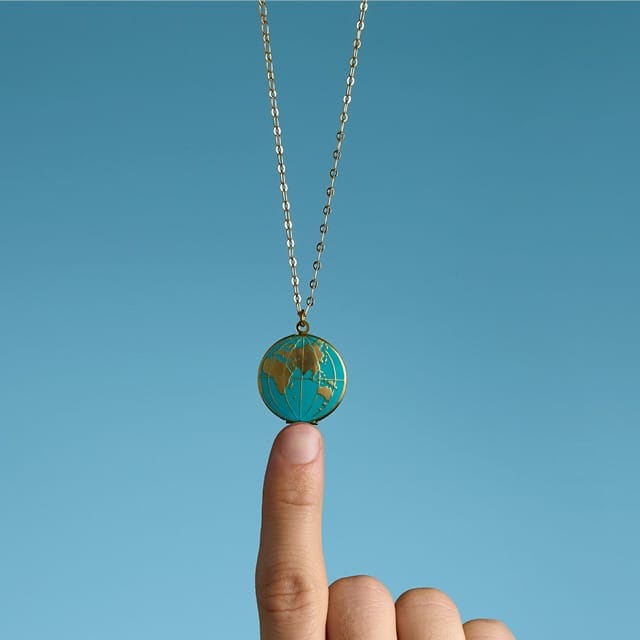

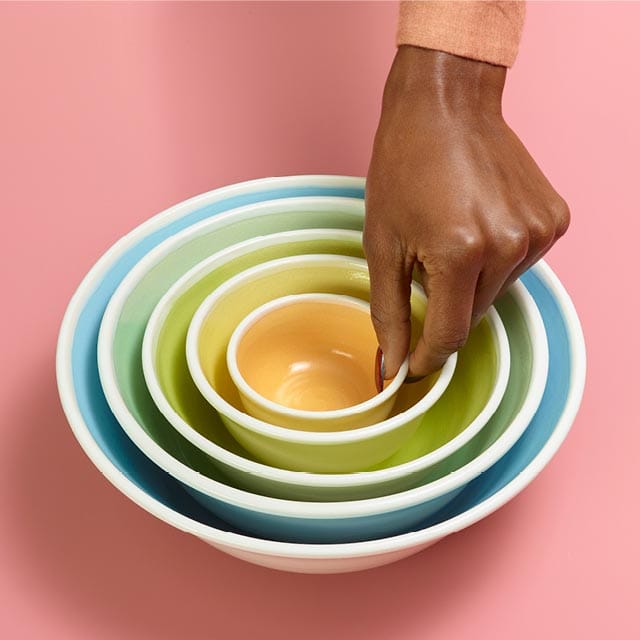
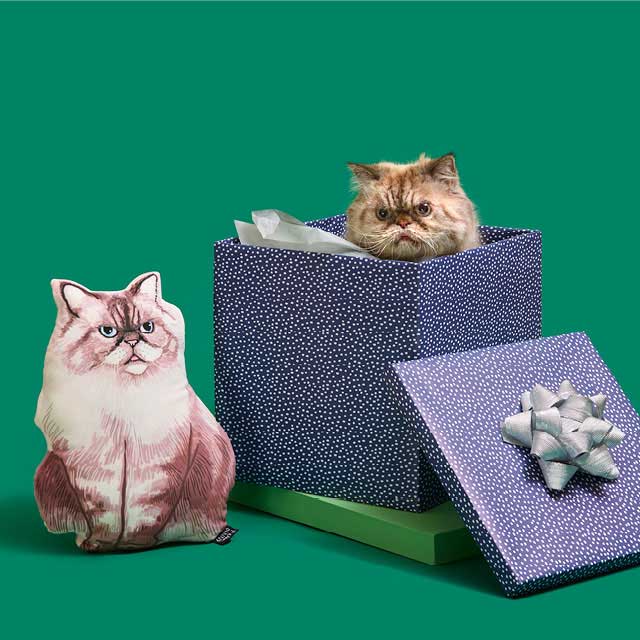
About
Follow Etsy
Нужна помощь? Обратитесь в центр помощи
Россия Русский $ (USD)
Start typing the name of a page. Hit ESC to close, Enter to select the first result.
Did you scroll all this way to get facts about coffee hag ? Well you're in luck, because here they come. There are 30 coffee hag for sale on Etsy, and they cost 21,10 US$ on average. The most common coffee hag material is ceramic . The most popular color? You guessed it: green .
Biography of George Gund
Biography of George Gund
George Gund was born in La Crosse, Wisconsin, and his family settled in Cleveland in 1897. Following graduation from Harvard College (1909) and graduate study at Harvard Business School, his early career included banking and real estate in Seattle, serving in Army intelligence during World War I, developing the Kaffee-Hag Corporation in Cleveland, attending Animal Husbandry School at Iowa State University and ranching in Nevada.
In 1936, Mr. Gund married Jessica Roesler and settled down in Cleveland to raise a family. His interest in banking culminated in his becoming President of The Cleveland Trust Company in 1941. At his death in 1966, he was Chairman of the Board.
In 1937, Mr. Gund began a formal program of charitable giving, and his philanthropic concern extended throughout his life. He carefully selected those charities to which he committed his funds. If the commitment was considerable over a long period of time, he characteristically devoted much of his time and energy to the institution.
Strong relationships developed with the educational institutions that shaped Mr. Gund’s early life. He contributed time and money to University School (Cleveland), where he was a trustee, and to Iowa State University, where he established a scholarship program for students of animal husbandry. He served on the Board of Overseers of Harvard College from 1954 to 1960 and was closely involved at Harvard with the School of Public Health and the Business School from 1954 to 1966. Another interest in higher education was Kenyon College where he served as a trustee for many years.
Although Mr. Gund had little personal experience in the arts, his devotion to them was great. Perhaps the single best example was his long association with the Cleveland Institute of Art. In 1942, he became President of the Institute and, under his leadership, saw it develop into a lively and prestigious institution.
The George Gund Foundation was created in 1952 because Mr. Gund believed the private foundation concept provided the most positive, farsighted vehicle for intelligent underwriting of creative solutions to social ills in a manner which would not be limited to his own lifetime. He favored the corporate foundation structure directed by an experienced, sensitive board of trustees entrusted not only with disbursement of funds, but an objective, practical review of proposals. He valued the degree of freedom a private foundation can exercise in seeking and fostering innovative ideas and in implementing demonstration projects.
About the Foundation
Quick Links
The dramatic re-creation of Public Square inspired this year’s photo essay on Cleveland’s public spaces. The photographs invite us all to see and think about our shared spaces in new ways.
HAG Coffee factory
The Café HAG factory is made out of reinforced concrete and was built for Ludwig Roselius in 1906-07 by Bremen architect Hugo Wagner.
Built in 1906-07 by Bremen architect Hugo Wagner for Ludwig Roselius, the inventor of decaffeinated coffee, the Café HAG factory is made of reinforced concrete. Its products, such as Café HAG decaffeinated coffee and Kaba instant chocolate, were exported across the world.
Later on, Ludwig Roselius funded the rebuilding of Böttcherstrasse, which shapes the image of Bremen's city centre to this day.
Coffee is still being produced at the old factory in Überseestadt. As part of a guided tour of Lloyd Caffee, you can discover the secrets of the art of roasting and see the magnificent marble hall. A cup of coffee is, of course, also available on site.
Opening hours Lloyd Café:
How to get there
Get in touch
+49 421 3080010 by email
Click the 'Listen' icon to download or play:
The Railroad Hour #161, 'Holiday Inn', from Oct 29, 1951
Please Donate here:
Kelloggs Kaffee Hag Coffee circa 1927
Kelloggs Kaffee Hag Coffee circa 1928
Kelloggs Kaffee Hag Coffee circa 1927
Self-Starter Breakfast circa 1931
Moo-oo-oo Goes the Cow circa 1932
Gro-Pup Complete Dog Food circa 1934
Feeling Sluggish? circa 1933
Battle Creek Sanitarium (the former Western Health Reform Institute of the Church of The Seventh Day Adventists) circa 1880
The Kellogg story is a fascinating confluence of religion, colon health, and good old American Entrepreneurialism. It all began in 1854 when the Adventist Church was established in Battle Creek, Michigan. By 1860, the Church changed it's name to Seventh-day Adventist (SDA): “Seventh Day,” being their Sabbath day--Saturday, the seventh day of their week. “Adventist,” because they were remnants of the Millerite movement that erroneously predicted the advent of the Second Coming of Christ in 1844 (oops!). The Seventh Day Adventists believe in the sanctity of body and soul, and advocate temperance in all things, and preventive medicine, especially, as a way of life. In support of this belief, the Adventists opened their first health retreat in 1866 in Battle Creek--"The Western Health Reform Institute". Dr. John Harvey Kellogg (1852-1943) took charge of the Institute for the Seventh-day Adventist Church in 1876, changing the name to The Battle Creek Sanitarium. He coined the word “sanitarium” to better reflect his idea of a sanitary retreat for both health restoration and training in contrast with “sanitorium,” which customarily referred to a hospital for invalids or for treatment of tuberculosis and other infectious diseases of the era. Dr. John Harvey Kellogg (1852-1943) and younger brother Will Keith Kellogg (1860-1951) Both Dr. Kellogg and his younger brother Will Keith Kellogg, his bookkeeper and business manager (from 1880, on), were men of very short physical stature; Dr. Kellogg 5 feet four inches, and his younger brother the taller at 5 foot seven inches. But as history would bear out, they were both destined to become men of great stature as inventors, entrepreneurs, and humanitarians. Among his various duties, W.K. Kellogg assisted his brother in food experiments. Dr. J. H. Kellogg, was the extrovert of the two, and somewhat more eccentirc as well, later in life adopting a wardrobe of completely white outfits (shoes, socks, suit, shirt, tie, hat, coat, galoshes), further accentuating his white hair, mustache and goatee. By contrast, W. K. Kellogg heavier, bald, unsmiling and introverted. W.K. inconspicuously served his older brother for 26 years at the Sanitarium. The Sanitarium Lab circa 1906 The 'shy' brother, W. K. Kellogg, is believed to have developed the first edible corn flake product, working after hours as business manager, in the food laboratory at the Sanitarium, though both Kellogg brothers were probably involved in the discovery. The most significant food products developed by the Kellogg brothers were the flaked cereals: Sanitas, the first corn flake (1895), and Granose, the first wheat flake (1898). 1907 The original plant burns to the ground. The present day Battle Creek plant is built. 1910 W. K. Kellogg buys a full-page ad in Ladies' Home Journal. “The Funny Jungleland Moving Pictures Book” becomes the first of thousands of premiums offered to consumers who purchase Kellogg's® products. 1914 W. K. Kellogg begins worldwide expansion of the cereal business with introduction of Kellogg's Corn Flakes® in Canada. 1916 Kellogg's® introduces All-Bran® 1922 Battle Creek Toasted Corn Flakes Company renamed Kellogg Company. Sales begin in the United Kingdom. 1923 Kellogg Company hired Mary Barber, a registered Dietitian, to establish one of the industry's first professional home economics departments to develop recipes using Kellogg's® cereals. 1924 Kellogg plant is built in Sydney, Australia. 1928 Rice Krispies® appears on the market 1930 Kellogg became the first company to print nutrition messages, recipes and product information on its packages. 1931 Kellogg Company sponsors the nation's first radio network program for children, “The Singing Lady.” 1933 Snap! Crackle! Pop!® first appears on the side of the Rice Krispies® box 1938 Kellogg plant is built in Manchester, England. 1942 Raisin Bran is first available in stores 1951 Kellogg plant is built in Querétaro, Mexico. Founder, W. K. Kellogg, dies at age 91. 1952 Kellogg's introduces Sugar Smacks® and Frosted Flakes®. 1953 Cornelius®, the rooster, made his debut on boxes of Kellogg's Corn Flakes®. 1958 Tony the Tiger® won a contest over Katy the Kangaroo to become the sole spokescharacter for Kellogg's Frosted Flakes®. Cocoa Krispies® appeared on store shelves. 1963 Kellogg operations begin in Takasaki, Japan. Froot Loops® were introduced along with its character, Toucan Sam®. 1964 Kellogg's® introduces Pop-Tarts® toaster pastries. Kellogg's developed an impressive stable of popular Radio Show sponsorships and both showing their understanding of their target audience as well as developing a continuing demand for their products: Kellogg's Kaffee Hag spot ad for Sumber Music circa 1937 Slumber Hour was billed as providing 'the sweetest music' of the era, presumably to underscore Kellogg's Kaffee HAG Coffee's abscence of caffeine. One has to wonder how many of it's listeners fell asleep during the show, before all the commercial spots had aired. That may explain it's relatively short run. Indeed, soon after the demise of the program, Kelllogg's Kaffee HAG Coffee was sold to General Foods in 1928, later to become the Sanka decaffeinated coffee we know today. Irene Wicker (Ireene Wicker), Kellogg's 'The Singing Lady' circa 1933 The Singing Lady, or "Kellogg's Singing Lady" was billed as the first radio network program directed at children. Ireene Wicker was "The Singing Lady". The Singing Lady's songbook was made available to her listening audience as a promotion from Kellogg's. Indeed, in 1932, Kellogg's ran a promotion by which mom's could acquire The Singing Lady's songbooks by redeeming Kellogg's boxtops. The promotion was both a runaway success for Kellogg's and an eye-opener for the radio advertising agencies of the era. Irene Wicker not only sang songs to her audience, but actually did more story telling than singing. The Story Lady parody shorts of later years were based on Irene Wicker's delivery and program. Ireene Wicker herself, is credited with 'discovering' Mel Torme, at the 1934 Chicago's World Fair, where she was judging the chldren's section of the singing contest. Torme was only 10 yrs old when he was judged the winner. In 1935, Kellogg published When the Great Were Small, a book developed to inspire children to pursue the great skills and talent of the artists and musicians who precded them. In 1960, for her devoted work in children's media, Irene Wicker was later awarded a Peabody Award, in honor of her outstanding achievement in radio and television. One of Kellogg's more prestigious programs of the era was The Circle, which aired during the 1938-1939 Radio Season. The caption reads: "Stars of NBC’s Kellogg Radio Show look pretty for the camera--starting left, Groucho Marx, Cary Grant, Lawrence Tibbett, Carole Lombard, Chico Marx and Ronald Colman." Throughout 1939 Kellogg's sponsored the Howie Wing Program. Howie Wing is a fascinating and relatively recent re-discovery in the World of Golden Age Radio. The airplane had great impact on our popular culture after the dogfights of WW-I. The Howie Wing Radio Program, created by Wilfred G. Moore, aired from 1938 to 1939. Howie Wing was a 21-year-old "junior pilot" whose adventures were typical for juvenile air fiction of the era. Wing was mentored by Captain Harvey, a WW-I Ace. Howie's girlfriend is Donna Cavendish and his fellow pilot was "Zero" Smith, one of the best "tough weather pilots" but cranky, devious, generally irascible, and sometimes suspected of working for the Germans. The true villain of the show is Burton York, posing as an insurance agent to discredit Captain Harvey, Howie Wing's mentor and father figure. Airlines had bridged both the Pacific and Atlantic Oceans by then and the public interest in aviation had piqued. Kellogg's sponsored the First Air Express Round-the-World shipment to generate interest in the Howie Wing program. They prepared two suitcases; one to be sent Round-the-World by air in an easterly direction and the other westerly. The race was to see which suitcase would win its Round-the-World trip. The suitcases travelled on: The suitcases departed Battle Creek, Michigan on February 22, 1939, the Westerly suitcase arriving first back in Battle Creek 25 days later and the Easterly suitcase 29 days later each suitcase having made approximately 75 different stops while traveling 31,188 miles around the World. The "Breakfast Programs" were a natural for Kellogg's. From Breakfast At Sardi's, to The Breakfast Club, to Breakfast In Hollywood, the Breakfast shows were the perfect vehicle to underscore Kellogg's history-long campaign to convert the World to the idea of starting every day with a meal of one of Kellogg's Breakfast Cereals. Breakfast at Sardi's was actually the precurson to Breakfast in Hollywood., Tom Brenneman hosting both shows, the second from his own restaurant, Brenneman's. Both C.W. Post and General Foods had joined as many as 40 other competitors to much of Kellogg's product line, from their Grain Breakfast Cereals, to their grain based Dog meal to their non-caffeintated hot beverages, their competitors were nippping at Kellogg's heels and both copycatting or outright stealing Kellogg's yearly product and marketing innovations. Breakfast in Hollywood was so successful that it was spun off into a full length movie of the same name in 1946. The Adventures of Superman and Kellogg's sponsonship of the program once it moved to The Mutual Network, proved to be one of the better natural pairings of product to protagonist in the history of early radio advertising. Of the over 1300 episodes of The Adventures of Superman, well over half were produced under Kellogg's sponsorship. Indeed, so mutually beneficial was the relationshiop between Superman and Kellogg's, that when Superman moved from Radio to Television, it was a natural for Kellogg's to sponsor the TV version of the program. This was yet another long running program for Kellogg's, while further expanding it's juvenile demographic target to include a strong range of the fast growing adult viewer demographic. Mark Trail was another natural juvenile adventure program well suited to Kellogg's Pep's target demographic during the Breakfast Cereals advertising wars of the 40s and 50s. Mark Trail had a highly successful New York Post syndicated, then King Syndicated comic strip penned by Ed Dodd in 1946,.and later drawn by Jack Elrod from 1978 forward. Beginning with January 30, 1950, the Mutual Broadcasting System launched the Mark Trail Radio Program , featuring Matt Crowley as Mark Trail. Airing three time weekly, 174 thirty-minute episodes were produced, running through June 8, 1951. A second radio series, starring Staats Cotsworth, of Casey, Crime Photographer fame, aired by ABC beginning September 18, 1950, with 51 half-hour shows that ran three times weekly until January 1952. The series then switched to a 15-minute format, producing another 125 episodes that aired weekdays through June 27, 1952. Of the approximately 350 episodes originally commited to transcription, only 10 of the 15-minute episodes are known to have survived. Trail's adopted son, Rusty is the son of an alcoholic and abusive father. Mark Trail's intervention saved Rusty's life. Trail is accompanied by "Andy", his faithful Saint Bernard. Cherry Davis is Trail's longtime girlfriend. Cherry lived with Mark and her father (Doc) at Lost Forest. Doc Davis, a Veterinarian is Cherry's dad. Tom Corbett, Space Cadet was a relatively short lived sponsorship for Kellogg's--on Radio, especially. It ran for five years on Television and only six months on radio from January 1952 through July 1952. A juvenile space adventure, it began on TV, then a year later on radio, three days a week for ABC. The program was loosely based on the famous Robert Heinlein science fiction novel, "Space Cadet" of 1946. Legendary voice talent Jackson Beck was the announcer. Direction was by Drex Hines, with scripts from Richard Jessup, Jack Weinstock and Willie Gilbert, Don Hughes, and Gilbert Brann. Frankie Thomas was Tom Corbett , Al Markim was Astro and Ed Bryce was Captain Strong. Together they fought and vanquished criminals, space pirates, renegade Solar Guard officers, treacherous colonists and all manner of space disaster. Jan Merlin reprised his TV role as the ill-tempered Roger Manning , who tended to get into one serious scrape or another in almost every episode. Use Player above to Play "Breakfast Pals" from 1939 ''3 Rings. That's your freind from Battle Creek.'' December 1922 Kellogg's Corn Flakes Ad circa 1906 ''Made In Canada'' Corn Flakes Ad circa 1914 1936 Kellogg's spot ad for Hollywood Talent Parade and Kellogg's Singing Lady Kellogg's Pep circa 1938 Not sure if this reads the same in 2009 as it did in 1937. Krumbles were widely respectied as excellent source of roughage for promotion of lower colon health, though. 'Top O' the Morning Treat' c. 1931 'Daddy's Girl, Growin' Big' circa 1950 Sanka Commercial before Acquisition by Maxwell House c. 1958 (Sanka was first invented in Germany, as Kaffee Hag, then promoted in the U.S. by Cleveland entrepreneur George F. Gund II, who purchased Kaffee Hag for only $130,000 before eventually selling Kaffee Hag Corporation to Kellogg's in 1927 for $10,000,000 in stock options. Those stock options now represent 9.2% of Kellogg's ownership. Kellogg's Kaffee Hag Coffee was later sold, to become Sanka, now owned by Maxwell House) When the Great Were Small pamphlet circa 1938 Ireene Wicker Singing Lady Children's Mother Goose Action Circus circa 1938 Howie Wing Cadet Aviation Corps Handbook circa 1939 Live Chat: Let our experts help you choose the perfect bike. Connect GermanDeli provides German & European food & groceries to US residents. No "handling" fees are charged. There is no minimum purchase. During "checkout" (before you need to provide a payment) you can get an estimate of shipping charges. If the actual shipping costs are lower than the estimate, your card will be charged the lower amount. Orders are shipped from GermanDeli's Texas warehouse to all 50 states in the USA, to US Military Troops, APO and FPO addresses, some U.S. Territories, and to Canada. NOTE: Perishables, like meat and dairy, cannot be shipped to Canada and certain other postal codes. Shipping of heat-sensitive items to some locations during certain parts of the year may be restricted. Do you have questions? Call or send an email to Support@GermanDeli.com. © 2017 GermanDeli. All rights reserved. | Toll Free in the USA Phone 877-GERMANY or (local) 817-410-9955Cafe Hag Instant Decaf Coffee 200g (7oz)
Description
Description in German
Комментариев нет:
Отправить комментарий